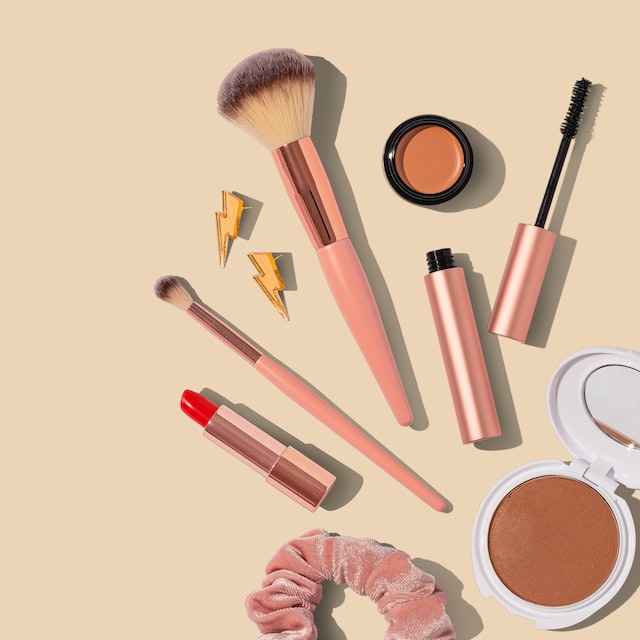No recycled content. No take-back program. Destined for landfill, incineration or (worse yet) the environment. This probably doesn’t sound to you like a recipe for success in sustainability. It didn’t sound great to two veterans of the beauty products industry either. Mia Davis is vice president of sustainability and impact at Credo Beauty and Victor Casale is cofounder and CEO at MOB Beauty. They saw the problem in the beauty packaging space and decided to do something about it by starting Pact Collective.
As its website describes it, "Pact exists to share information transparently and educate industry stakeholders effectively so we can take responsibility for the waste we create." The collective consists of more than 130 member companies from all parts of the beauty value chain. Notable members of the collective include Sephora and Eastman Chemical, and Pact is working to add several multinational beauty brands this year to further amplify the scale of its impact.
I had a chance to sit down and chat with Davis a couple weeks ago to talk about Pact’s origins, goals and early progress.
Why Pact Collective? Why now?
Let’s start with a basic understanding of the scale here. An estimated 120 billion beauty and wellness packages are produced each year. That is a lot of packages, more than 27 per global consumer.
Davis comes from a background in safe ingredients for beauty products. It goes all the way back to her days as organizing director at the Campaign for Safe Cosmetics from 2007 to 2011. I know as well as anyone, though, that you can start by looking at the chemical hazards of ingredients and it quickly snowballs to include where and how those ingredients are sourced, where waste exists in the system and what can be done to improve packaging.
"Beauty product packaging is often too small to be caught and sorted by standard material recovery facility [or MRF] equipment," Davis said. "And shockingly few of those small jars, caps and tubes have resin ID codes or disposal instructions. Without this basic information, both customers and hand sorters at facilities like Pact's cannot quickly and easily determine what material they're holding."
So, what’s needed to increase packaging sustainability in this industry? Pact Collective’s theory of change is based on four key principles.
1. Sourcing
Pact’s founders understand that if there were a one-size-fits-all solution to the beauty product packaging challenge, then the collective would not have to exist. The key to Pact’s sourcing guidance is relatively simple: Choose the best material set for the application and choose the material most likely to be reused or recycled within that set.
2. Design
This (to me) is where the real innovation lies. Pact delivers eight suggestions for designers. Some of my favorites: design for reuse, reduce the amount of packaging, use the highest possible post-consumer recycled content (PCR).
To me, design is the most exciting space we can focus on when it comes to packaging. As architect, designer and author William McDonough often says, "Design is the first signal of human intention." I’m not generally an optimist, but I do believe there are folks out there creative enough to design a sustainable future if brands are willing to try new things and experiment.
3. Education
If you’re anything like me, you start thinking about whether something can be recycled before you even buy it. You look at the thing and say, "Yeah, I’m sure this can be recycled somewhere." I’m usually wrong due to the huge chasm between theoretical and practical recycling. Pact is pushing for more transparency in labeling so users of products don’t have to guess.
One way to improve education, though, is to label better. "Suppliers need to make packaging that is accurately labeled and we immediately need to stop buying packaging that is not [labeled for recycling]," Davis said. "The idea that it is 'too hard' to put a resin code on a beauty package is so limited, a poor excuse. When we mandate truth in labeling, through regulation and market policies, then we will see packaging suppliers making materials that can actually be recycled in MRFs."
4. End-of-life
What actually happens between our curbsides and the next life of a piece of packaging? For most beauty and wellness packaging, it is landfill or incineration. So, not really much of a next life at all.
What dictates this? First and foremost, material selection. So much of this packaging uses materials that either can’t be recycled or don’t have a market for recycling. Second is size. As mentioned earlier, most MRFs have great difficulty separating small packages and keeping them in the recycling flow. That means that even if beauty and wellness packaging is recyclable and marked as such, much of it is literally falling through the cracks and ending up in landfills, incinerators or (worse yet) the environment.
Pact Collective is addressing this problem to some degree by creating take-back programs and hand separating materials to learn what’s in the packaging mix. This take-back, sorting and eventual sale directly to recycling markets will allow Pact members to gain invaluable data as they work to innovate packaging solutions for the future. Hand sorting is clearly not a scalable model in North America due to labor costs, though, so this should be seen as a transitional solution to get us to the next step.
Collectives such as this hold promise for entire industries to become more sustainable if they can engage the whole supply chain and expect real change from their members. I look forward to following Pact as it grows and evolves. With any luck, it’ll build a movement in the beauty industry that can increase circularity and provide a template for other industries to improve as well.
Image: Amy Shamblen (Unsplash)
This article appeared on Greenbiz.com



